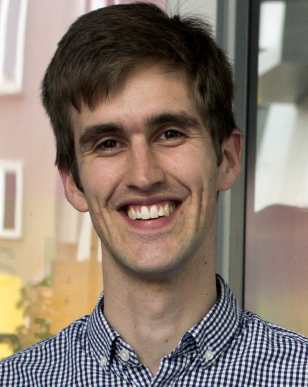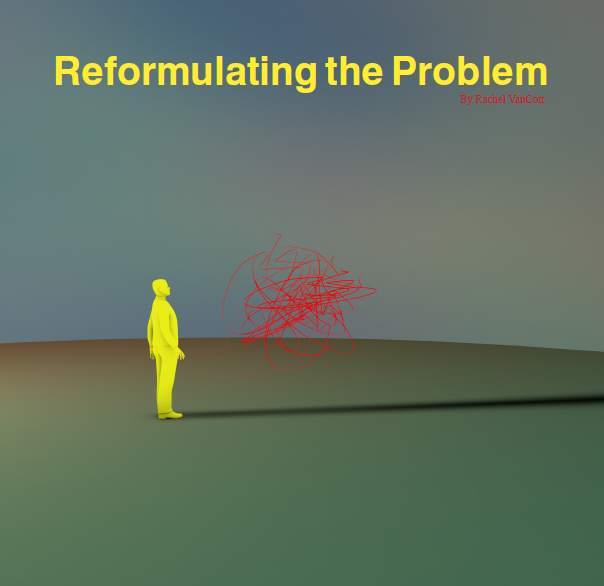Internet access is scarce in the remote villages of Namibia. There was certainly no chance of getting online, where James Saunderson was staying as a volunteer teacher, in that sparsely populated country in Southern Africa.
If he wanted to check on the status of his graduate school application, he had no choice but to hitchhike over a hundred miles to the closest town. One weekend, an acceptance letter from MIT was waiting for him in his inbox.
James came to Namibia by way of his interest in teaching and a quirk of the academic calendar. After graduating with bachelor's degrees in mathematics and electrical engineering from the University of Melbourne, in Australia, he considered getting his PhD in the US. But if he did that, he'd be left with some time on his hands. The Australian school year ends in December and students in the US don't even start sharpening their pencils until the following September.
He decided to spend the time volunteer teaching, at the high school level, to see how it suited him. As an undergraduate, he was a TA for multiple courses and he found a real satisfaction in teaching. He discovered that he loved hunting for the core of an idea. He liked grappling with the challenge of communicating concepts and seeing the payoff that came when a student really, truly, understood a concept.
"I find teaching to be a very difficult and very interesting problem in some ways," said James, "I like thinking about how to really explain things to people." So James volunteered with WorldTeach, a non-governmental organization that sends volunteer teachers to work and live in developing countries. The WorldTeach program placed James at the Divindu school, where he taught mathematics and physical science.
When he found out he was accepted to MIT, James was excited, but he couldn't just take off and travel over seven thousand miles to meet with potential advisors on campus. So he kept making weekend pilgrimages, gathering information about labs, drafting emails during the week and sending them from the nearby town.
A few weeks later, he heard from LIDS Director Alan Willsky and LIDS Associate Director Pablo Parillo, offering him a research assistantship. He said yes, without hesitation. "I'd never met them," James said, "I knew some things about what they did, but not a lot. What I wrote on my application was what I thought. They knew my background [from my application] and they wouldn't sign me up if they didn't think it would be a good fit for everyone involved."
"It seems to me that professors take a lot of leaps of faith in hiring grad students," James said, "They get used to taking that leap of faith. I suppose I also took a leap of faith, but I didn't think of it that way, I just said `Yes.'" Though he'd planned to stay a full year in Namibia, James was able to hand off the program to a new semester-long volunteer and start MIT in the fall. So far, it's been a great match.
"I've been lucky enough to be able to work on problems that I've liked." said James, "Problems that have an intrinsic beauty, that I think have a simple answer, if only we could think about them clearly, in the right way. I get sucked into them, and can beat my head against them for a long time, and somehow it's still fun."
The problems that James has been beating his head against most recently, as part of his work at LIDS, share some qualities with the challenge he felt when he first started teaching. But where teaching involves rephrasing and explaining concepts so that they're easier for students to understand, his work at LIDS involves reformulating optimization problems so that they're easier for a computer to understand and solve.
An optimization problem is just what you'd expect it to be, based on the name. An optimization problem involves looking for the best solution, out of all the feasible solutions. You might want to design a fuel-efficient airplane, reduce waste in a manufacturing process, or make good estimates of the orientation of a satellite as it tumbles in orbit. To start, you need reformulate the problem -- describe the problem's constraints and goals mathematically as something to be solved through computation. Sometimes, there's an obvious way to express the problem. But the first formulation a researcher sees isn't necessarily the best. The obvious choice might be unnecessarily complex, or described in a way that makes it difficult to formulate for and resolve via a computer program.
Researchers look, instead, for computationally "good" descriptions. Unfortunately, there's no simple system that can be used to generate a good description for a real-world problem. But similar problems can often be classified according to their properties. Once you classify a problem, you can try to solve it using methods that worked on other problems in the same family.
Part of James's work involves identifying problems that fall into a family that can be described and solved efficiently using the techniques from a subfield of optimization known as semidefinite programming. "I find it very satisfying when our new understanding of an optimization problem leads to computational methods that people didn't have access to before," said James.
But his ambition is to do more than just discover new examples to add to the list. He's interested in finding some way to understand why certain problems can be described in certain ways, and why other problems can't, in hope of seeing the bigger picture.
"I'm much more motivated by understanding what is going on than any particular application," said James, "When the story is very complicated, as it is now, it's hard to see how to solve the next problem, or even recognize when the problem can't be solved using the method at hand."
James sees echoes of his motivation, the desire to both solve a specific problem and, at the same time, lay the groundwork for understanding the general problem, in the work of other researchers and groups at LIDS. "I think a lot of work in LIDS over the years has been about taking the problems people really want to solve, then making the simplest version that preserves essence of the original. Really understanding these simplified problems can give all sorts of insight into the messy, full problem," said James, "It's an interesting space. I don't know if it exists in many places."
James is now in the fifth year of his PhD studies and nearing the end of his time as s student at LIDS. But if all goes according to his current plan, this is just the first part of his career in academia, where there's always room to grow, teach, and learn.
"I'd like to learn the knack of explaining the things that I like to think about better," said James. "Why I care about them. Why I think they're interesting and why other people should care about them. My work is pretty central to my life at the moment, I have to say. But that's mostly because I enjoy it a lot."




